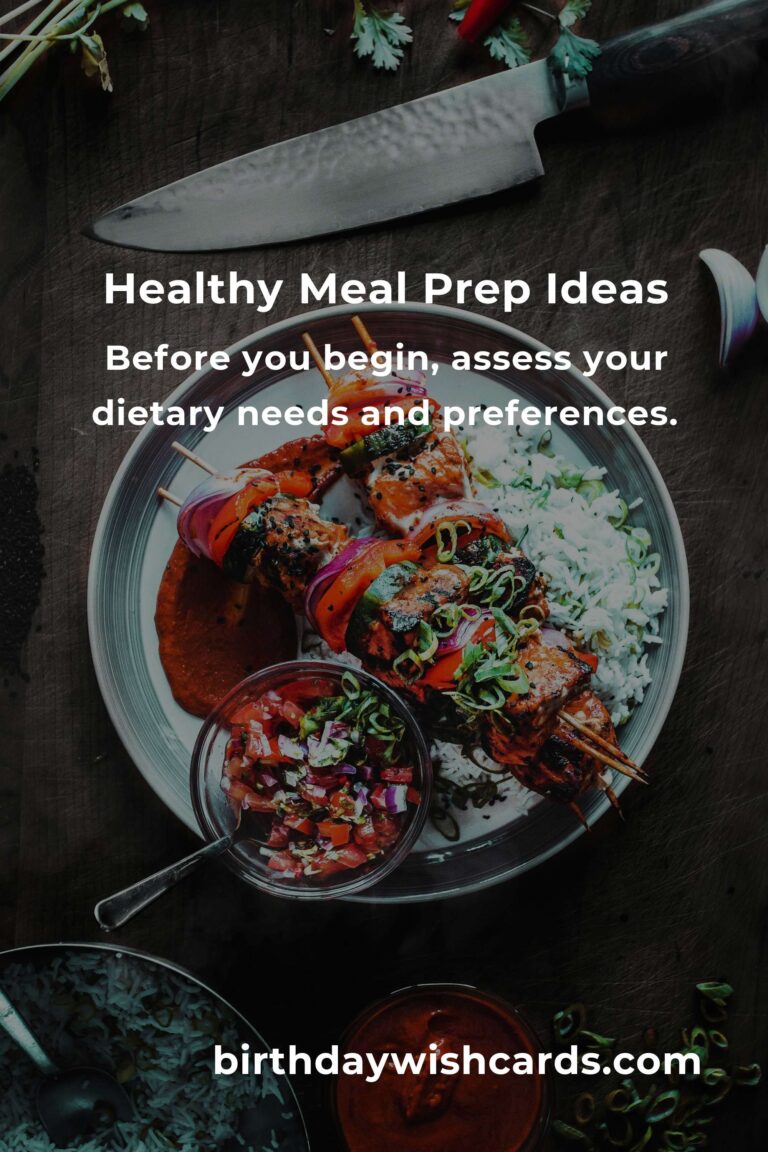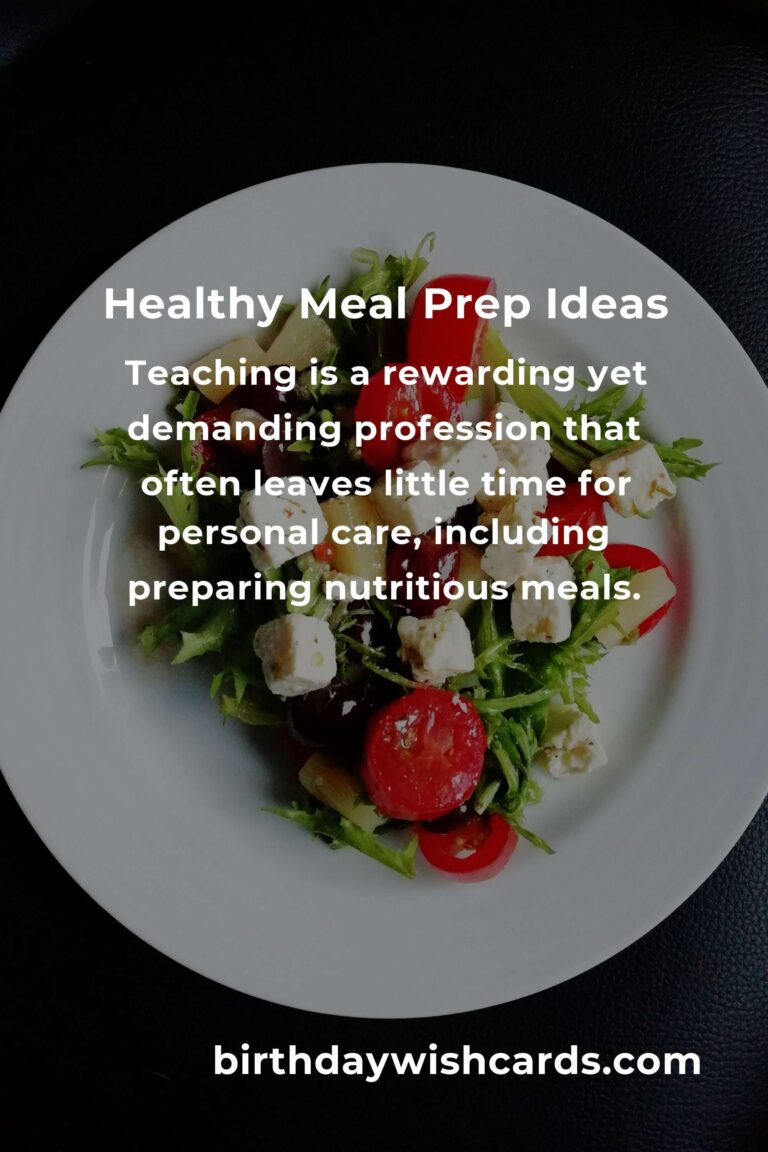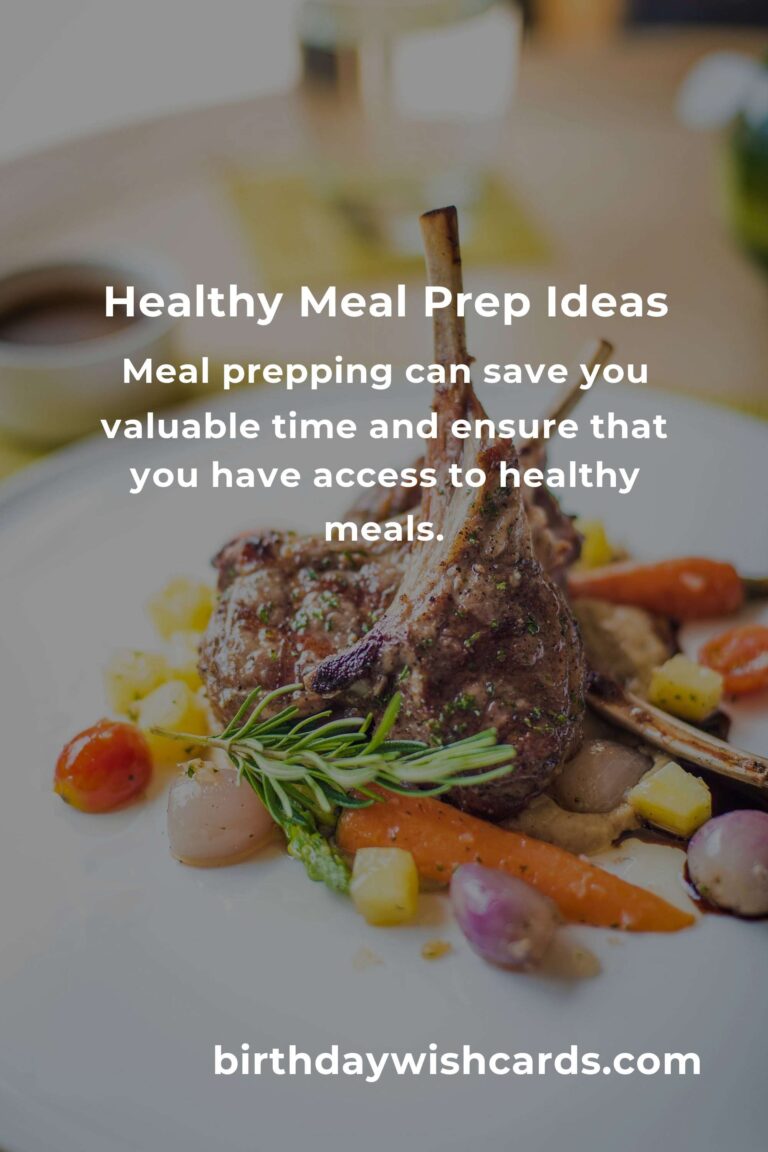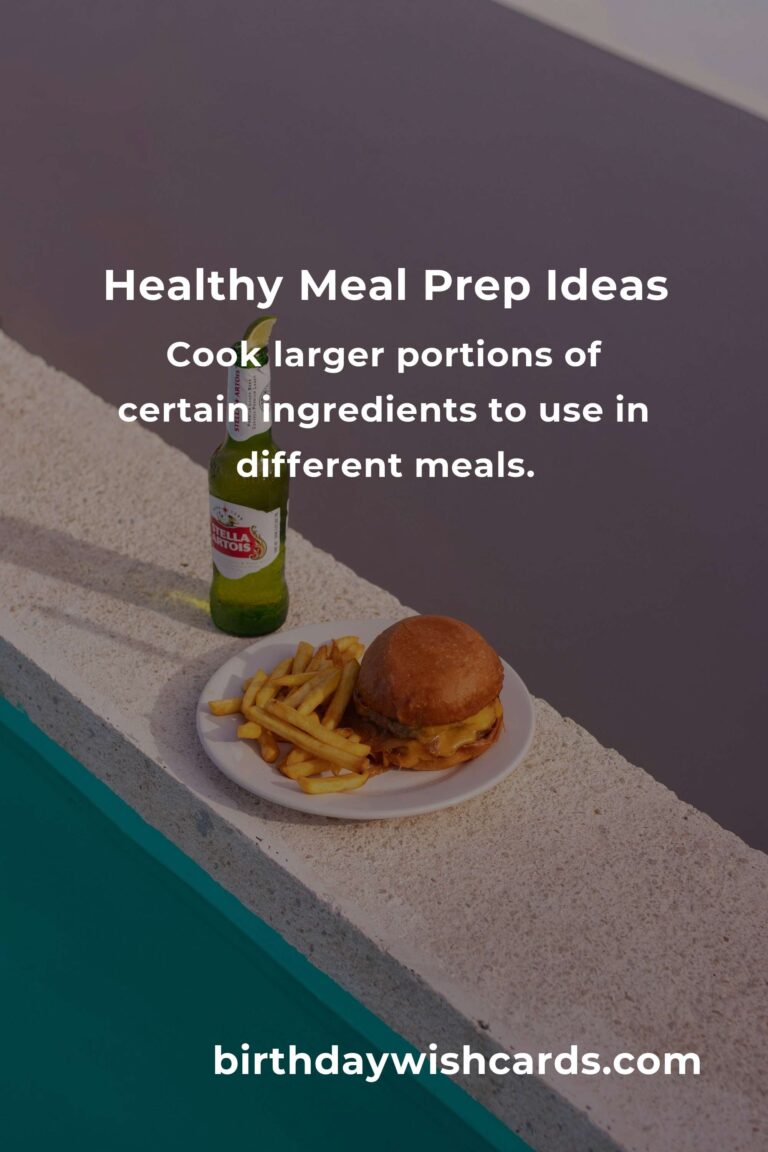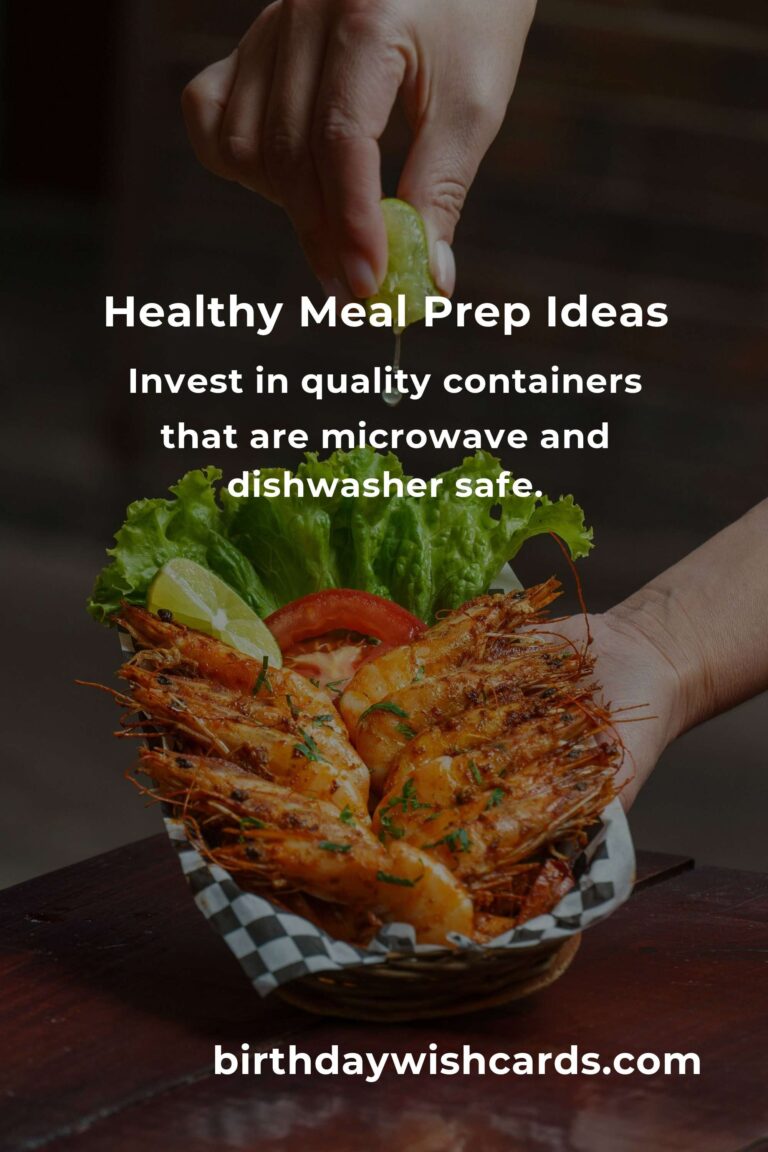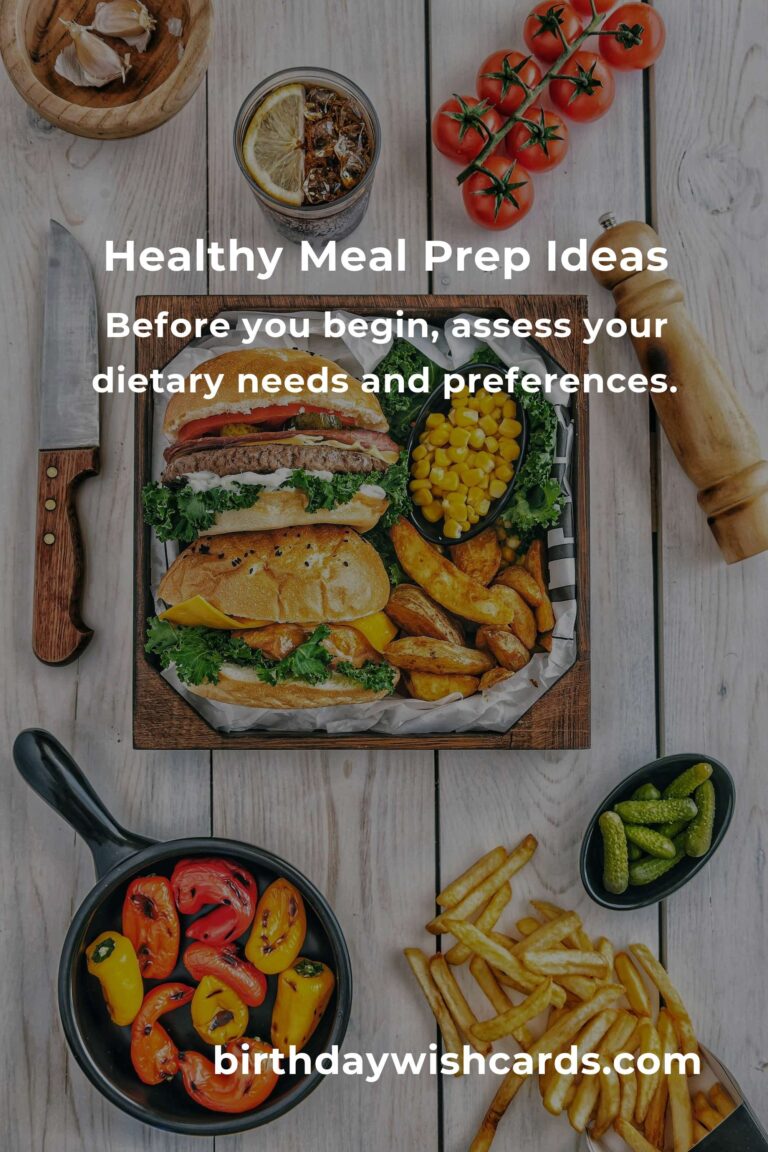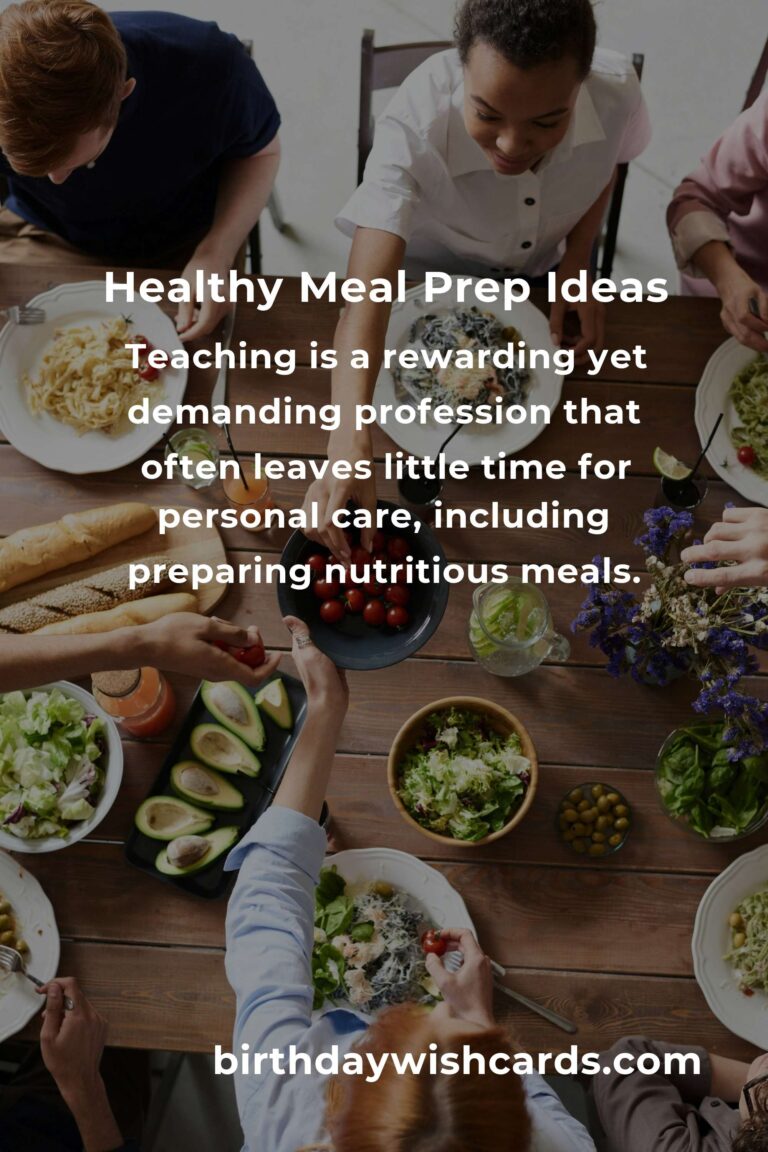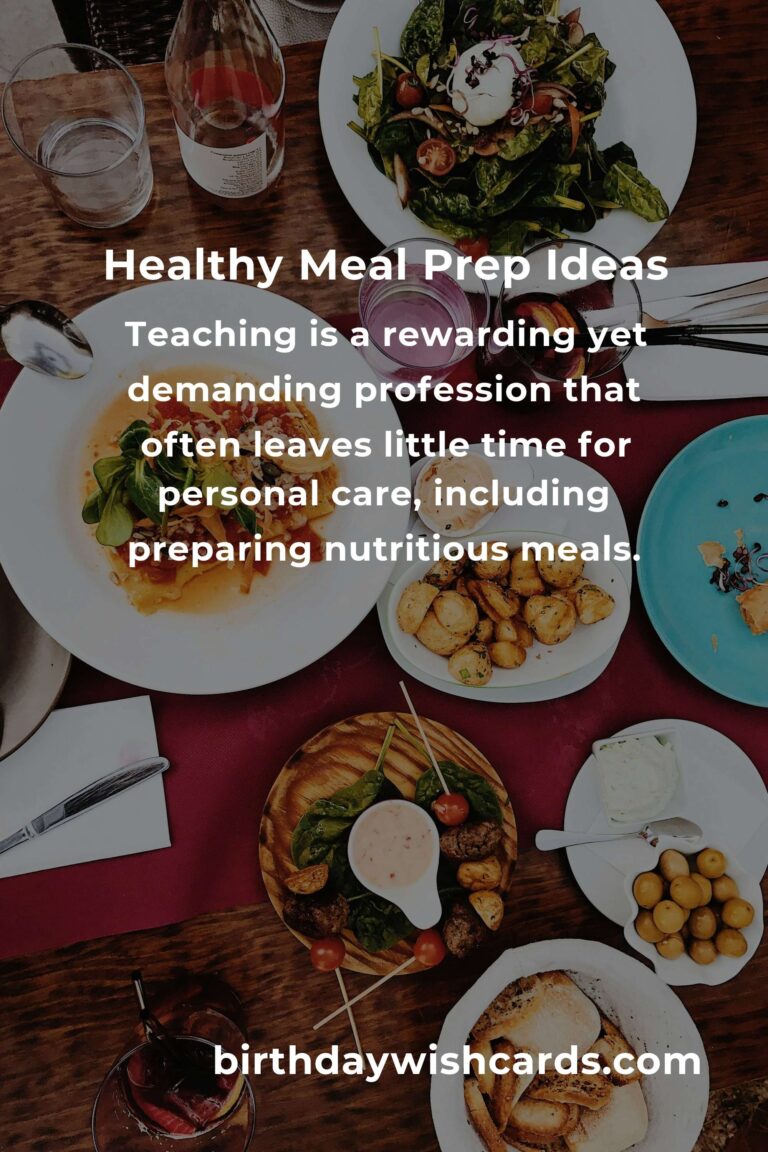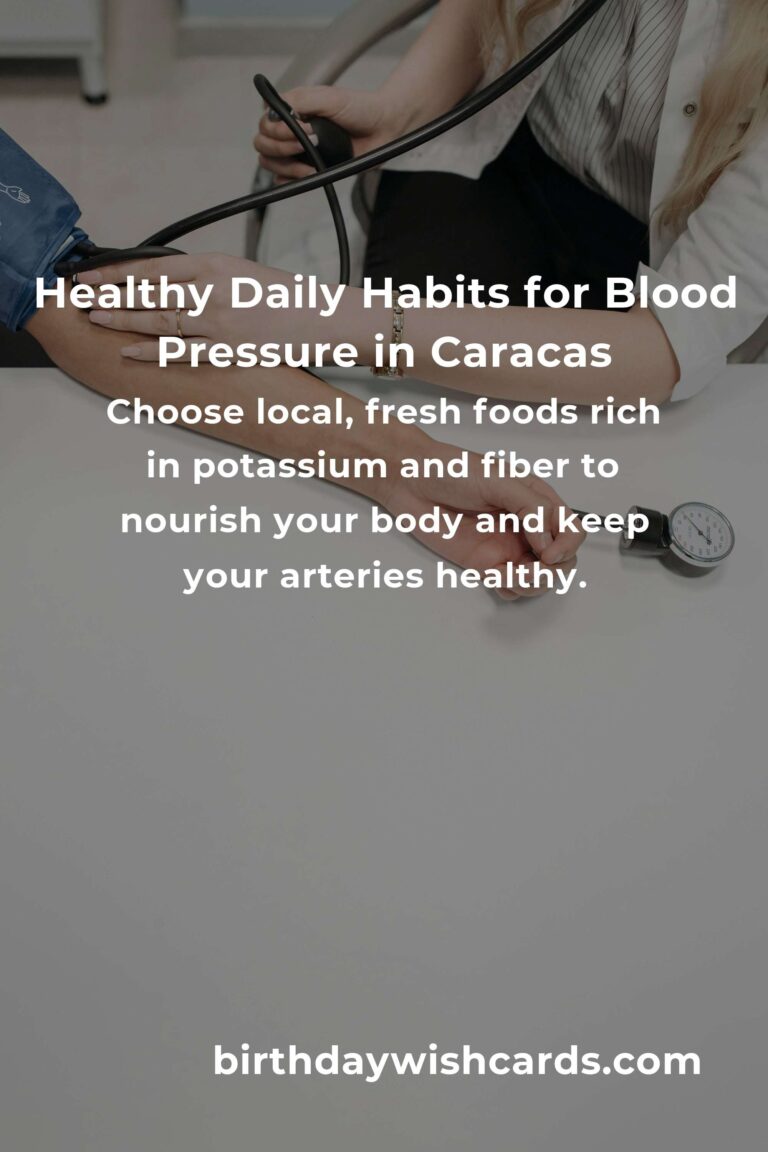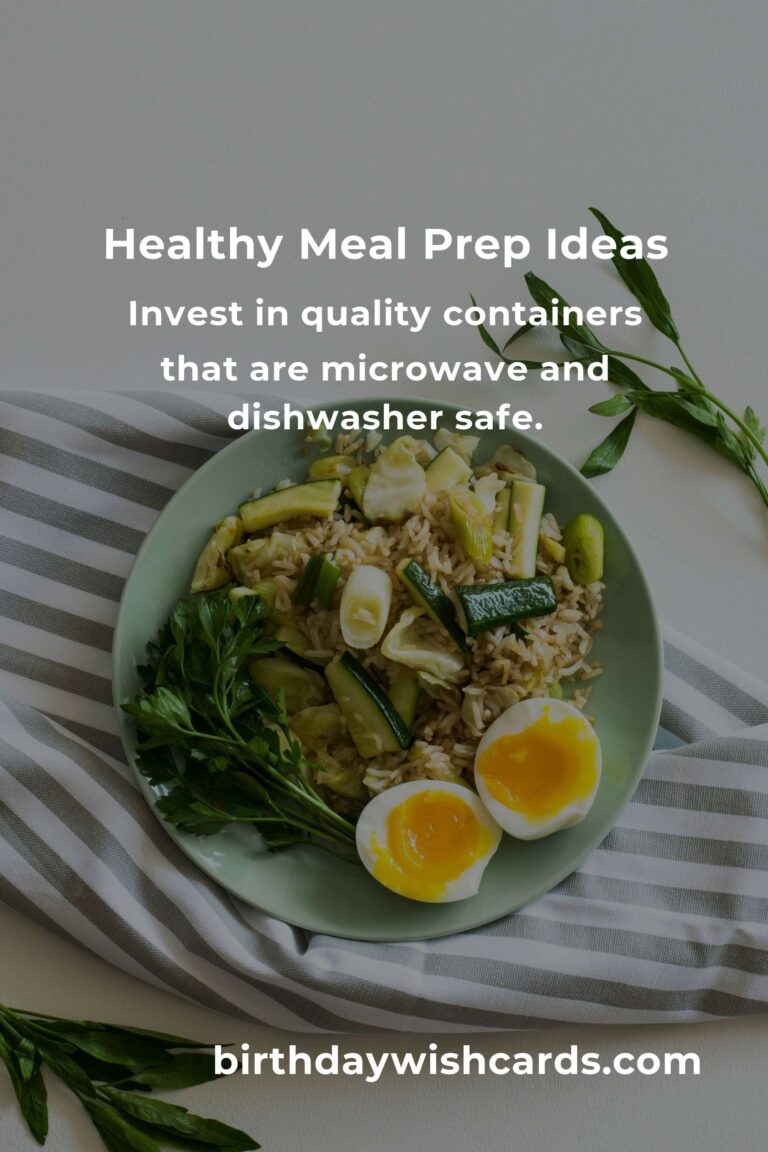
Teaching is a rewarding yet demanding profession that often leaves little time for personal care, including preparing nutritious meals. However, with some planning and organization, teachers can enjoy healthy meals throughout the week without spending hours in the kitchen daily. This article will guide you through the best meal prep strategies, recipes, and tips to maintain a balanced diet despite a hectic schedule.
Why Meal Prep is Essential for Teachers
Meal prepping can save you valuable time and ensure that you have access to healthy meals, reducing the temptation to opt for fast food or unhealthy snacks. For teachers, who spend long hours at school, meal prepping means having control over their nutritional intake and maintaining their energy levels throughout the day.
Getting Started with Meal Prep
Before you begin, assess your dietary needs and preferences. Consider how many meals you need to prepare for the week and what types of foods you enjoy. Having a clear plan will help you stay organized and make your meal prep more efficient.
Essential Tools for Meal Prepping
Invest in quality containers that are microwave and dishwasher safe, a reliable set of measuring cups, a sharp knife, and a cutting board. These tools will make the process smoother and save you time during preparation.
Steps to Effective Meal Prep
1. Plan Your Meals: Decide on a menu for the week, including breakfast, lunch, and snacks. Try to incorporate a variety of foods to ensure a balanced diet.
2. Grocery Shopping: Create a shopping list based on your meal plan. Stick to the list to avoid unnecessary purchases and focus on fresh, whole foods.
3. Set Aside Time: Dedicate a few hours on the weekend or a day off to prepare your meals. This might include cooking grains, chopping vegetables, and portioning out snacks.
Healthy Meal Prep Ideas
Breakfast: Overnight oats, smoothie packs, or egg muffins are quick and nutritious options that can be prepared in advance.
Lunch: Prepare salads in jars, wraps, or grain bowls. Include a source of protein such as grilled chicken, beans, or tofu.
Snacks: Portion out nuts, fruits, and yogurt into single servings to grab quickly between classes.
Tips for Successful Meal Prep
1. Batch Cooking: Cook larger portions of certain ingredients, like quinoa or roasted vegetables, to use in different meals.
2. Label Your Meals: Use labels to remember what each container holds and the date it was prepared.
3. Stay Flexible: Be open to swapping meals if necessary. Flexibility can help keep the routine enjoyable rather than a chore.
Maintaining Motivation
Meal prepping should be seen as a way to ease your week, not add stress. Keep your meals interesting by trying new recipes and allowing yourself to indulge occasionally. Remember, the goal is to nourish your body and mind to perform your best in the classroom.
Conclusion
Healthy meal prep can transform a teacher’s week, providing not just convenience but also a foundation for a healthier lifestyle. By incorporating these strategies, teachers can ensure they are well-fed, energized, and ready to tackle each day with enthusiasm.
Teaching is a rewarding yet demanding profession that often leaves little time for personal care, including preparing nutritious meals.
Meal prepping can save you valuable time and ensure that you have access to healthy meals.
Before you begin, assess your dietary needs and preferences.
Invest in quality containers that are microwave and dishwasher safe.
Cook larger portions of certain ingredients to use in different meals.
#HealthyEating #MealPrep #TeacherLife #Nutrition #Wellness


